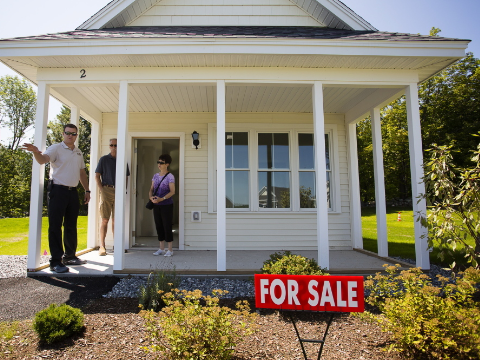Here’s Why Senior Housing Options are Expected to Drastically Drop in Price
Here’s Why Senior Housing Options are Expected to Drastically Drop in Price
Finding affordable housing is just one of many obstacles seniors face. The reality is that most seniors are on a tight budget, and expenses like electricity, cable, and housing add up quickly.
According to the United States Census Bureau, older adults will outnumber children for the first time in the country’s history by the year 2034. The laws of supply and demand indicate that as the population ages and demand for senior housing increases, prices should increase in parallel.



Related Topics (ads):
Fortunately, government agencies, like the Administration on Aging, and real estate developers are teaming up to ensure that aging adults can afford to live independently, outside of long-term care facilities if they want to. The agencies and developers have essentially flipped the laws of supply and demand in favor of housing affordability by over-building senior-suited housing in preparation for the future.
How Much Does Senior Living Cost?
Seniors’ expenses don’t differ much from the expenses younger adults face - housing, car payments, insurance, cable and internet, telephone, utilities (like hydro and electricity), groceries, everyday items like dish liquid, laundry detergent, and toiletries, and so on. The significant differences are that seniors generally have less income than younger adults, and they’re at a higher risk for unexpected expenses related to healthcare.
How Much Are Seniors Paying for Housing?
A recent study in the Journal of Health Affairs estimates an annual rental rate of $40,000 (or $3,333 per month). With an average retirement income of about $44,000 and an average Supplemental Security Income (SSI) of just $435 each month, most seniors need to be very mindful of their expenses to make ends meet.
Related Topics (ads):
The Alarming Statistics
According to the National Council on Aging:
- Over 25 million seniors are struggling with financial insecurity.
- Older women receive, on average, $4500 less in Social Security benefits than men. For women of color, those numbers are even more dismal.
- One-third of senior-led households have no money left over each month once essentials are paid for. Even worse, some wind up with more expenses than income - every month.
- More than one-third of seniors are in debt - either in the form of a loan, a mortgage, or a line of credit.
How to Find the Best Deals on Senior Housing
If you’re living in an urban area, consider looking into options a little further from the city’s center, in the city’s fringes, or in nearby, less populated rural towns.
Great deals on affordable housing are less likely to be heavily promoted or advertised for a few reasons. Firstly, realtors and property managers are paid commission, so they focus primarily on promoting costlier properties. Secondly, it’s in the seller or renter’s best interest to hang onto senior-targeted housing until demand increases (again, supply and demand). Sponsored advertising balances this trend. Advertisers are paid when they produce results, and they’d rather lead you to opportunities that you’re interested in, so they’re more likely to show you affordable options.
As the saying goes, “the early bird gets the worm,” and if you look in the right places and act early to secure affordable housing ahead of the increase in demand, you’ll be surprised by the exceptional deals you can find. The best time to start looking for housing is right now.